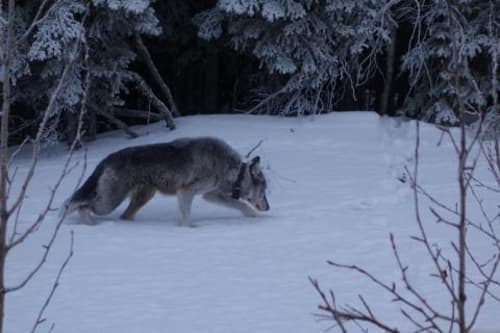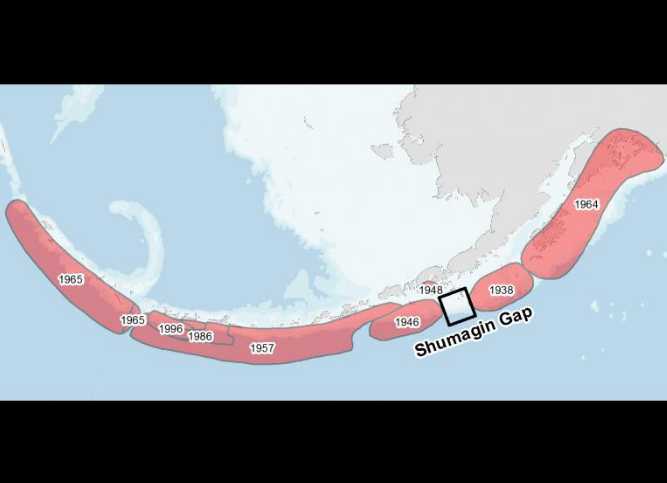JOINT BASE ELMENDORF-RICHARDSON, Alaska — On Nov. 30, 2018, a magnitude 7.1 earthquake jolted Southcentral Alaska.
In the temblor’s crosshairs was Alaska Air National Guard Senior Airman Liana Chythlook who had just reported to work. The intensity of the quake’s shockwaves rocked the building like a Dixie cup in a tornado.
“I looked up, and the doorway was shaking like paper,” said the 176th Medical Group public health technician. “I just ran outside.”
Miles away, 2-year-old Adrik couldn’t understand what force of nature violently shook his daycare center with thunderous report. His father, Senior Airman Angelo Romano, a 176th Medical Group bio-environmental engineer, said the now 3-year-old boy still runs for the sanctuary of the tub when an alarm goes off.
The earthquake left the city of Anchorage and surrounding communities paralyzed with massive damage to highways, bridges, and buildings. On Dec. 4, 1957, a magnitude 8.1 earthquake — 32 times stronger than the Alaska earthquake — struck southwest Mongolia. Thirty-two people were killed, and it could have been worse if it hit a more populated area.
For three weeks in September, Mongolia National Emergency Management Administration, Mongolian Armed Forces and local Mongolian agencies partnered with their U.S. and international counterparts in Sainshand during Gobi Wolf 2019, which centered around a simulated response to a catastrophic earthquake in Dornogovi Province.
GW 19 is hosted by NEMA and MAF as part of the U.S. Army Pacific’s humanitarian assistance and disaster relief “Pacific Resilience” series.
Chythlook and Romano represented Alaska’s delegation to the U.S. medical team working with their Mongolian partners.
According to Washington Air National Guard Lt. Col. Ann Beyer, 141st Medical Group readiness officer, the Mongolian medical providers hosted a subject matter expert exchange where behavioral health, public health, bio-environmental engineering, mass-casualty evacuation, and triage procedures were discussed and compared.
“Our mission here is to build lifelong working relationships with the Mongolians to network and create a partnership where we can always count on one another in a natural disaster,” Romano said.
At the end of the exchange, the combined group worked through some tough tabletop scenarios arising from the simulated earthquake. Along with physicians and commissioned medical planners, the two enlisted Airmen took the opportunity to share their knowledge.
“They are both so knowledgeable and are real go-getters,” Beyer said, elaborating how the National Guardsmen are trained to deploy nation and worldwide to help out during a disaster. “They’re ready to do anything, anytime, for anyone. It’s a proud fact in the National Guard that we have such caring people who are willing to take care of everybody.”
[content id=”79272″]
Chythlook is a full-time Guardsmen who grew up in the city of Teresina, Brazil, a metropolis comprising more than a million citizens. She moved to Alaska to be with her husband, joined the Alaska Air National Guard, and swore in as a U.S. citizen in June 2018.
“I didn’t just want a job,” she said. “I wanted a career. I wanted to do something that I liked.”
Romano, a native of Nampa, Idaho, moved to Alaska in 2013 when his wife got a job as a store manager. The Airman was laid off at his job during a downturn in the petroleum market, and it left him looking for other employment options.
He joined the Guard in 2016, earning money while attending Basic Military Training and technical school. Still a traditional weekend-drilling Guardsman, Romano said the skills he learned at tech school led to his full-time job as an Occupational Health and Safety Administration lead industrial hygienist.
“I owe a great debt of gratitude to the Air Guard because it helped jump-start my career in industrial occupational safety and health,” he said. “I’ve always wanted to do that. It’s my dream job.”
For Romano, GW 19 was his first opportunity to travel overseas. For Chythlook, a language major at one time, it was her first time visiting Mongolia. Both expressed gratitude for the chance to work with their Mongolian hosts.
Romano learned dozens of Mongolian phrases and used every chance to try out his new linguistic skills. Chythlook grabbed an opportunity to ride a two-humped Bactrian camel at a Sainshand farm. Romano was not so brave.
“Mongolia more than meets my expectations,” Chythlook said of her visit. “Culturally, it’s very different here for me, but I’ve been getting to know different people, and that’s a wonderful part without knowing the language. It’s been a great experience.”
View imagery of Midnight Sun Guardians participating in Gobi Wolf 2019





